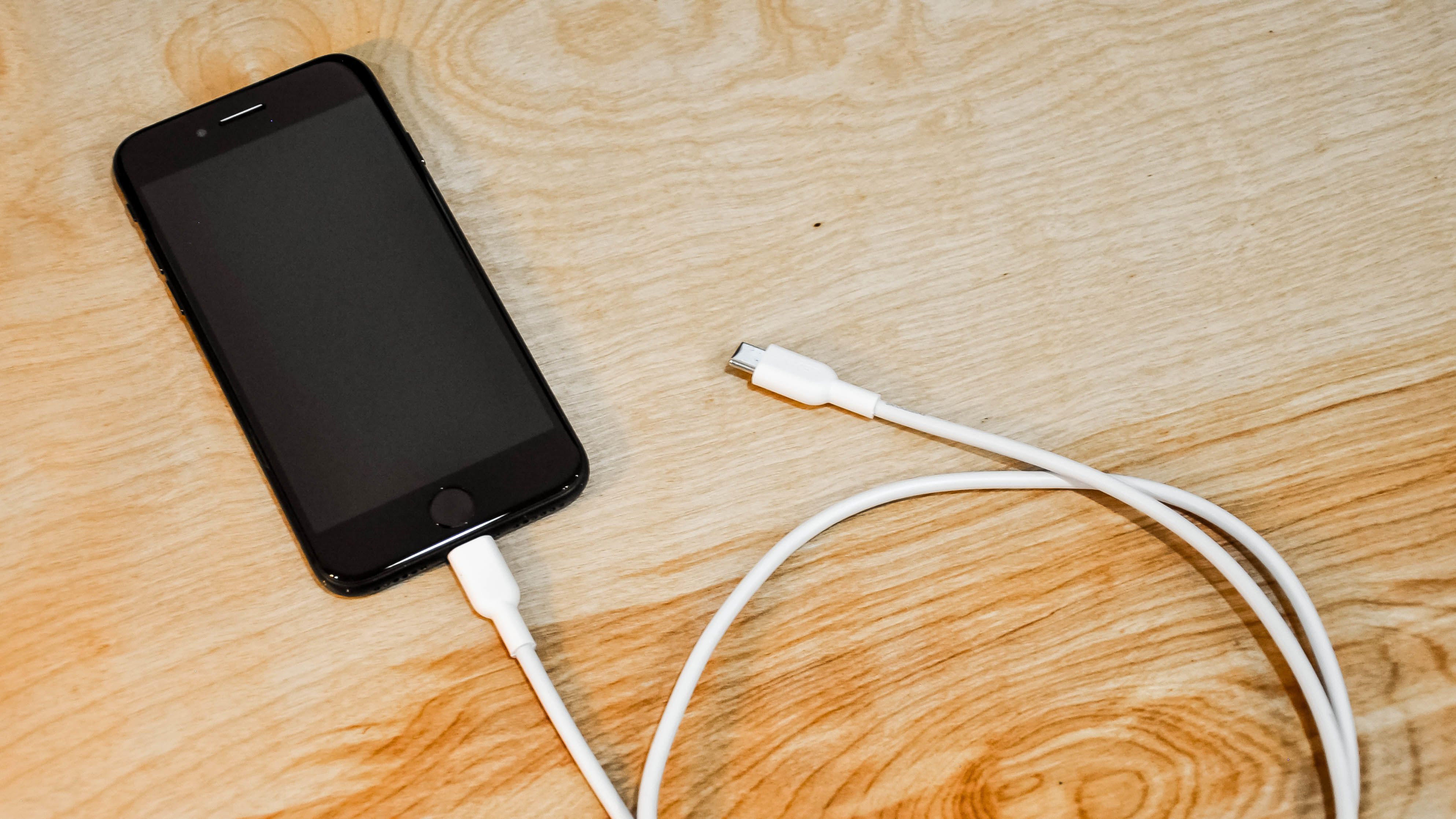In the modern era, technology is rapidly advancing and making our lives easier. As such, the debate between Lightning cables and USB-C cables has been a hot topic of discussion. Both types of cables have their own advantages and disadvantages that make them suitable for different purposes. This article will explore which type of cable is best for charging electronic devices, as well as which one offers the most convenience.
Lightning vs USB-C
When it comes to charging and data transfer needs, Lightning cable and USB-C are two of the most popular options for mobile devices. Apple’s Lightning cable has been around since 2012 and is used by all Apple devices except MacBooks. On the other hand, USB-C is a newer standard that offers faster charging, quicker data transfer speeds, and compatibility with an increasing number of devices.
One key advantage of USB-C over Lightning is its ability to handle higher power levels. With up to 100W of power delivery capability, it is possible to charge larger devices like laptops or even run external displays with a single cable. Additionally, USB-C can support bi-directional charging which allows you to charge two devices simultaneously.

However, one area where Lightning still reigns supreme is in its durability. The connector design ensures a secure fit and helps prevent damage from accidental tugs or pulls. This makes it a reliable option for daily use without worrying about wear and tear on the cord or port. Ultimately, both cables have their strengths and weaknesses depending on your specific needs but as technology continues to evolve we can expect more innovations in connectivity options for our mobile devices.
Advantages of Lightning
The Lightning cable was first introduced by Apple in 2012 and has since become the standard charging port for iPhones and iPads. While USB-C is becoming increasingly popular, there are still some advantages to using the Lightning cable. One of the main benefits is its compatibility with older Apple devices that still use this port.
Another advantage of the Lightning cable is its durability. The cable has a sturdy design that can withstand daily wear and tear, making it more long-lasting than other cables on the market. Additionally, it’s easy to plug in and remove from your device due to its symmetrical shape.
One final advantage of using a Lightning cable over USB-C is that it supports high-speed data transfer rates when used with compatible devices. This means you can quickly transfer large files such as photos or videos without having to wait hours for them to upload. While USB-C may be faster in terms of charging speed, the Lightning cable offers several key advantages that make it worth considering for those who own older iPhone models or want a more durable charging solution.
Advantages of USB-C
USB-C is quickly becoming the standard port for charging and data transfer on modern devices. One of the biggest advantages of USB-C is its versatility, as it can handle multiple functions in one cable. This means that you can use the same cable to charge your phone or laptop, transfer data between devices, and even power other peripherals such as monitors or external hard drives.
Compared to Apple’s proprietary Lightning cable, USB-C offers faster charging speeds and higher data transfer rates. In fact, some USB-C cables can deliver up to 100W of power, which is more than enough to charge laptops and other power-hungry devices. Additionally, USB-C is a reversible connector, meaning that you don’t have to worry about plugging it in upside down like with older USB ports.
Another advantage of USB-C over Lightning is its widespread adoption across different brands and device types. While Apple exclusively uses Lightning for its iOS devices, many Android smartphones and laptops now come with USB-C ports as standard. This makes it easier to find compatible cables and accessories when using multiple devices from different manufacturers.
Disadvantages of Lightning
One of the main disadvantages of Lightning cables is that they are proprietary Apple technology. This means that they can only be used with Apple devices, which limits their versatility. In contrast, USB-C is an industry standard and is compatible with a wide range of devices from various manufacturers.
Another disadvantage of Lightning cables is their durability. They are known to fray and break easily, especially if they are not handled carefully or if they are bent at sharp angles. On the other hand, USB-C cables are usually more robust and can withstand more wear and tear.
Finally, Lightning cables tend to be more expensive than USB-C cables. This is partly due to their proprietary nature but also because they often come bundled with other Apple products such as chargers or headphones. In comparison, USB-C cables can be purchased separately for a fraction of the cost.
Disadvantages of USB-C
One of the major disadvantages of USB-C is its compatibility with older devices. While newer laptops and smartphones are now equipped with USB-C ports, many peripherals such as printers, cameras, and external hard drives still use traditional USB-A or micro-USB connections. This means that users must purchase separate adapters or cables to connect these devices to their computers or phones.
Another disadvantage of USB-C is its variable charging speeds. While the port itself can support fast charging, the actual speed depends on a variety of factors such as the charger being used and the device’s battery capacity. In contrast, Apple’s Lightning cable provides consistent charging speeds across all compatible devices.
Finally, USB-C cables have been known to be more fragile than other types of cables due to their thinness and lack of reinforcement near the ends. This can result in frayed or broken cords over time which may need to be replaced more frequently than other types of cables.
Versatility & Compatibility
When it comes to versatility and compatibility, USB-C is the clear winner over Lightning cable. USB-C cables can be used for a multitude of devices, including laptops, smartphones, tablets, gaming consoles and more. This means you don’t have to worry about having multiple cables for different devices or purchasing new ones when upgrading your technology.
On the other hand, Lightning cables are limited in their use as they are primarily designed for Apple products. While this may be convenient for Apple users who only own Apple products, it can be frustrating if you need to charge a non-Apple device or transfer data between devices that use different ports.
In addition to versatility and compatibility, USB-C also offers faster charging and data transfer speeds compared to Lightning cables. This makes it a more efficient choice overall for those who value speed and convenience in their technology accessories.
Price Comparison
When it comes to charging your smartphone, the Lightning cable and USB-C are two of the most popular options available. Both have their pros and cons, so it can be challenging to determine which one is better for you. One factor that many people consider when making this decision is price.
In terms of pricing, USB-C cables are generally more affordable than Lightning cables. This can make them an attractive option for those who want a reliable charging solution without breaking the bank. However, it’s important to note that not all USB-C cables are created equal – some may not meet industry standards or may be poorly constructed, leading to potential safety hazards.
On the other hand, Lightning cables tend to be pricier than USB-C options but offer a higher level of reliability and compatibility with Apple devices. These cables have been rigorously tested and certified by Apple, ensuring that they meet high standards of quality and safety. Ultimately, the decision between Lightning cable vs USB-C comes down to personal preference and budget – but it’s important to remember that price should not be the only factor in your decision-making process.
Conclusion: Which is Better?
In conclusion, it’s difficult to definitively say whether Lightning cable or USB-C is better. It ultimately depends on the devices you’re using and your personal preferences. For Apple users, Lightning cables are still the primary option for charging and data transfer among their devices. However, as more manufacturers switch to USB-C in their devices, it may become a more universal option.
One advantage of USB-C is its reversible design, making it easier to use and eliminating the frustration of trying to plug in a cable upside down. Additionally, USB-C can support faster charging speeds and higher data transfer rates compared to Lightning cables.
Ultimately, both Lightning cable and USB-C have their pros and cons, so it’s important to consider your specific needs before deciding which one is right for you.





